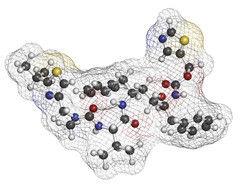Improving HIV+ patient adherence
Highly populated Asian countries such as India have many HIV+ patients who have low-income levels. The EU and India partnered under the HIVIND project to test the efficacy of mobile phone-based interventions as well as an enzyme-linked immunosorbent assay (ELISA)-based viral load assay in 631 ART-eligible patients. Two high-HIV–prevalence states in south India were selected for the multi-centric randomised clinical trial to determine ART medication adherence. A clinical trial on this topic has never before been undertaken in Asia. Customised weekly automated voice reminders and a pictorial message were used as mobile phone intervention methods. The performance of the ELISA-based viral load assay called ExaVir was compared to polymerase chain reaction (PCR) assays. Time to virological failure and pill count ART adherence were used to determine outcomes. Factors assessed included the incidence of opportunistic infections, viral mutations, immune reconstitution inflammatory syndrome and adverse drug reactions. The mobile intervention costs each patient less than USD 2 per year. However, mobile phone voice reminders did not significantly affect time to virological failure and medication adherence at the end of two years of therapy. On a positive note, this mobile phone strategy could be applied to selected patient sub-groups or for different treatments. Falling CD4 cell counts indicate immunological failure. This measure is currently used to monitor treatment efficacy in HIV+ patients in resource-limited areas as viral load measurement is too expensive. The low-cost ExaVir test performed well in comparison to the expensive PCR method. Routine clinical application of ExaVir could help in faster detection of treatment failure in HIV+ patients. Project outcomes were disseminated to the scientific community via 14 publications and over 7 scientific conference presentations as well as through manuscripts. Meetings with key policymakers for AIDS control were also carried out at a regional and national level in India. Early and accurate assessment of treatment efficacy in HIV+ patients could prolong their lifespan, reduce the risk of drug-resistant viral strains emerging and improve outcomes. Study results should also aid national and international policy and programme makers in developing evidence-based guidelines to contain HIV infection and promote ART adherence.
Keywords
HIV, antiretroviral therapy, ART adherence, patient follow-up, ExaVir







